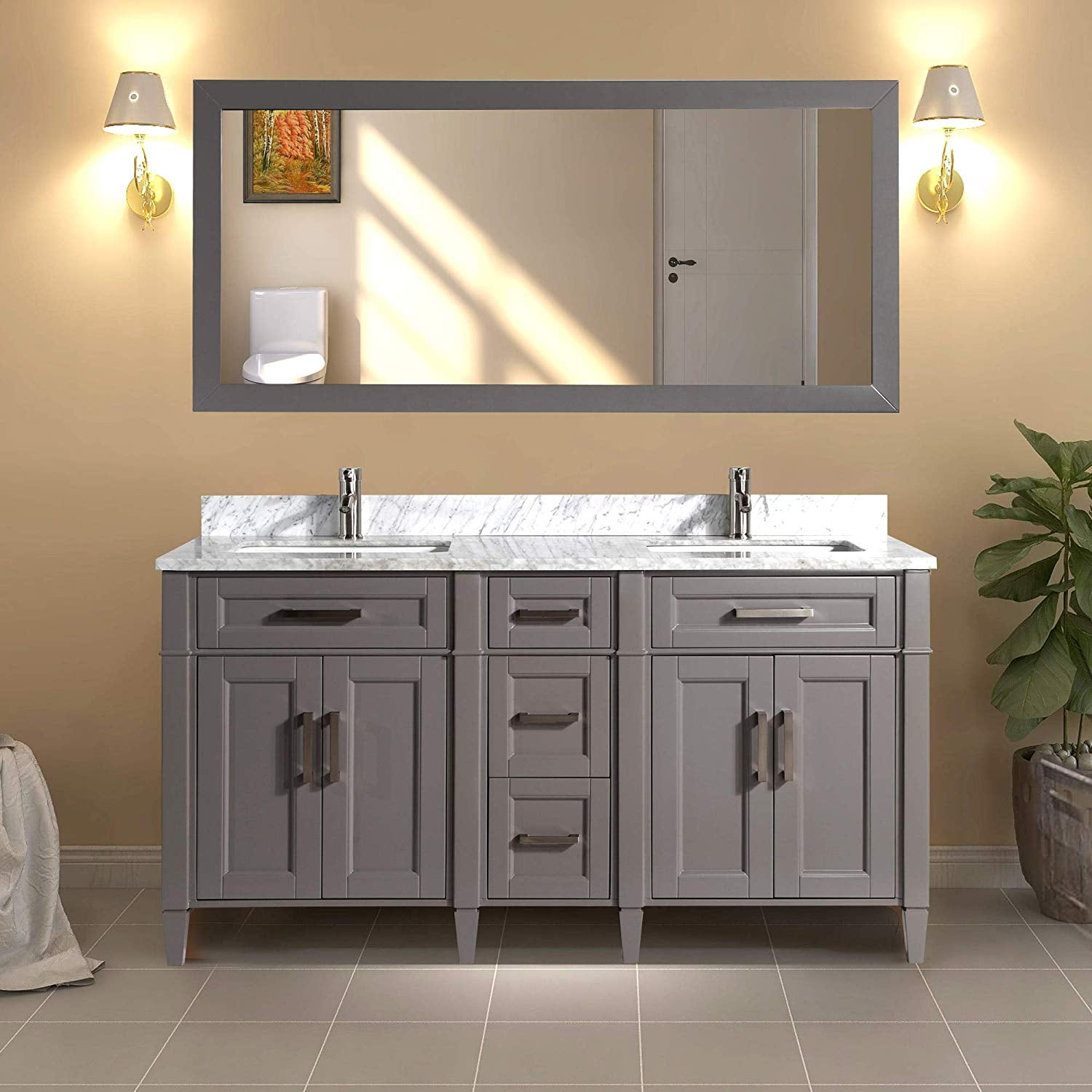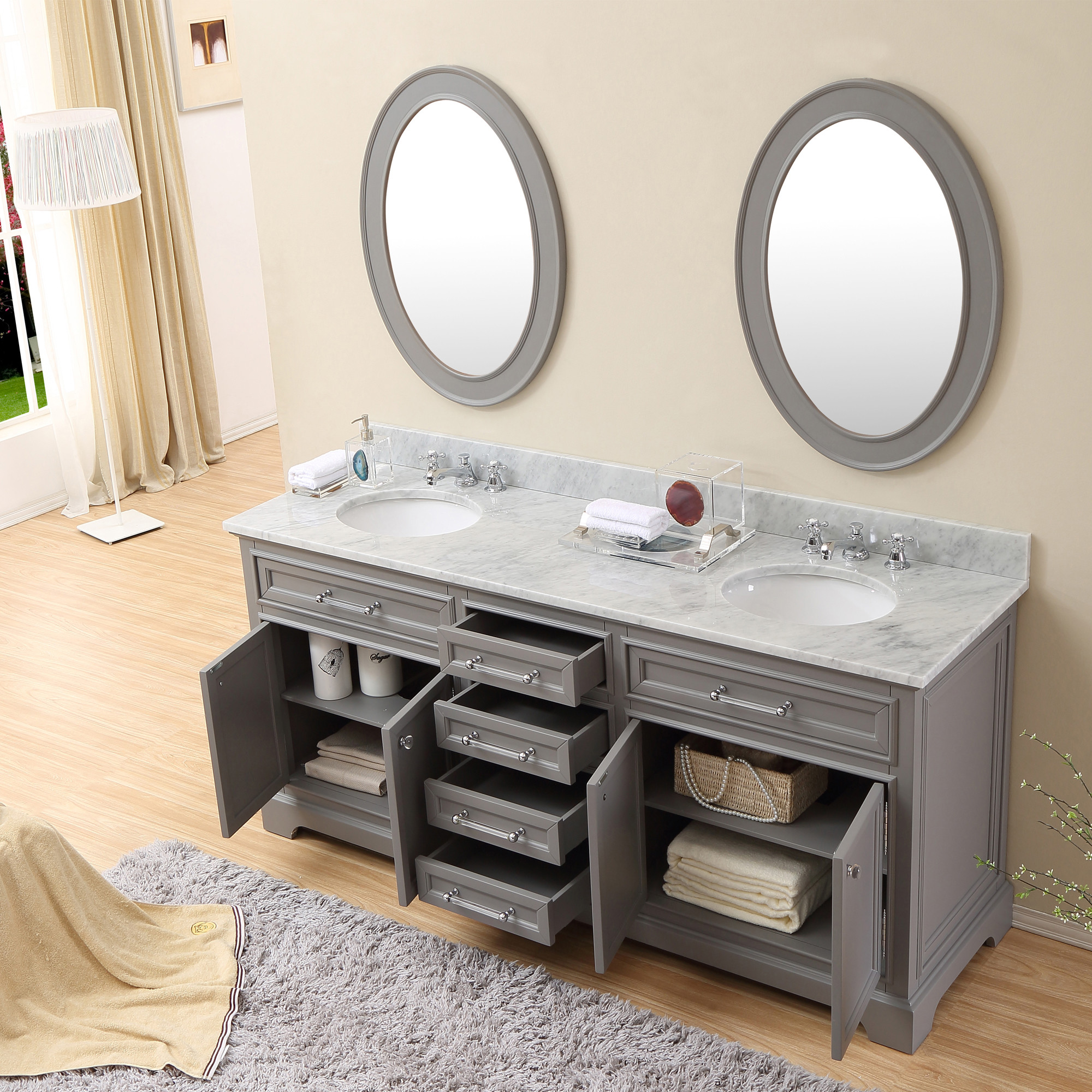Planning Your Master Bathroom Double Vanity

A double vanity is a luxurious addition to any master bathroom, providing ample space for two people to get ready simultaneously. However, planning and executing this project requires careful consideration of various factors, from budget and space to style and functionality.
Designate a Budget
A double vanity installation can be a significant investment, and a clear budget is essential for a successful project.
- Materials: The cost of materials can vary significantly depending on your choices. Cabinets, countertops, sinks, and faucets are the major components.
- Cabinets: Expect to pay between $1,000 and $5,000 for a double vanity cabinet, depending on the material (wood, laminate, or MDF), size, and features (drawers, shelves, doors).
- Countertops: Countertop materials range from affordable laminate ($25-$75 per square foot) to luxurious granite ($50-$150 per square foot) or quartz ($60-$100 per square foot).
- Sinks: Sinks come in various materials, including ceramic, porcelain, and stainless steel. Prices can range from $100 to $500 per sink.
- Faucets: Faucets can be a significant cost, with options ranging from basic models for under $100 to high-end designer faucets exceeding $1,000.
- Labor: Labor costs will depend on the complexity of the installation, the location, and the contractor’s experience. Expect to pay between $50 and $100 per hour for labor.
- Upgrades: Adding features like custom cabinetry, integrated lighting, or heated floors can significantly increase the overall cost.
Space Considerations, Master bathroom double vanity
The size and layout of your master bathroom will influence the dimensions and placement of your double vanity.
- Room Size: A double vanity typically requires a minimum of 60 inches of width, but ideally, you should aim for 72 inches or more for comfortable use.
- Existing Fixtures: Consider the location of other fixtures, such as the toilet, shower, and bathtub, to ensure adequate space for movement and accessibility.
- Traffic Flow: Plan the layout to ensure smooth traffic flow around the vanity, particularly if you have limited space.
Style and Aesthetics
A double vanity can complement any bathroom style, from traditional to modern.
- Traditional: Traditional double vanities often feature ornate details, such as carved wood, raised panels, and intricate hardware.
- Modern: Modern double vanities emphasize clean lines, sleek surfaces, and minimalist designs.
- Farmhouse: Farmhouse double vanities are characterized by rustic charm, often featuring reclaimed wood, exposed beams, and distressed finishes.
- Contemporary: Contemporary double vanities combine modern elements with a focus on functionality and practicality.
Functional Features
Beyond aesthetics, a double vanity should be functional and meet your specific needs.
- Storage Solutions: Consider the amount of storage you require, such as drawers, shelves, and cabinets, to organize toiletries and other bathroom essentials.
- Countertop Materials: Choose a countertop material that is durable, easy to clean, and complements your style.
- Sink Types: Sinks come in various shapes and sizes, including undermount, vessel, and drop-in. Select sinks that are practical and aesthetically pleasing.
- Faucet Styles: Faucets are a significant design element and should be chosen based on style, functionality, and budget.
Choosing the Right Double Vanity: Master Bathroom Double Vanity
The heart of your master bathroom, the double vanity is a statement piece that combines functionality and aesthetics. Choosing the right double vanity is crucial to creating a space that’s both practical and stylish. Let’s explore the key factors to consider in this journey.
Materials and Finishes
Vanity materials play a significant role in durability, aesthetics, and overall cost. Here’s a comparison of common options:
- Wood: Natural wood vanities offer timeless elegance and warmth. They are often crafted from hardwoods like oak, maple, or cherry, known for their strength and durability. Wood vanities can be stained or painted to match your desired style, but require regular maintenance, such as oiling or waxing, to prevent drying and cracking.
- Laminate: Laminate vanities are a budget-friendly option that mimics the look of wood or stone. They are resistant to moisture and scratches, making them practical for high-traffic areas. However, laminate vanities can appear less luxurious than wood or stone and may not be as durable over time.
- Stone: Stone vanities, crafted from materials like granite, marble, or limestone, exude luxury and sophistication. They are highly durable and resistant to heat and scratches. However, stone vanities are more expensive than wood or laminate and require specialized care, including sealing to prevent staining.
Countertop Options
The countertop is a focal point of the double vanity, influencing both functionality and style. Here’s a breakdown of popular countertop materials:
- Granite: A natural stone known for its durability and unique patterns, granite is a popular choice for countertops. It is heat-resistant and scratch-resistant, making it suitable for daily use. Granite requires sealing to prevent staining and should be cleaned with a mild cleaner.
- Quartz: Engineered quartz is a non-porous material that is highly resistant to stains, scratches, and heat. It comes in a wide range of colors and patterns, offering versatility in design. Quartz countertops are low-maintenance and require minimal sealing.
- Marble: Known for its elegance and unique veining, marble is a luxurious countertop option. However, it is porous and susceptible to staining, requiring regular sealing. Marble is also softer than granite or quartz, making it more prone to scratches.
- Engineered Stone: This category includes materials like quartz and engineered marble, which combine natural stone with resin or other binders. They offer the beauty of natural stone with enhanced durability and lower maintenance requirements.
Sink Styles and Configurations
The sink is an essential element of the double vanity, impacting functionality and aesthetics. Here are popular sink styles:
- Undermount Sinks: These sinks are installed beneath the countertop, creating a seamless and elegant look. They are easy to clean and provide ample counter space. However, undermount sinks require a countertop with a specific edge profile for installation.
- Vessel Sinks: Vessel sinks sit on top of the countertop, adding a decorative element to the vanity. They come in various shapes and sizes, offering design flexibility. However, vessel sinks can limit counter space and require careful cleaning to prevent water from splashing onto the countertop.
- Drop-in Sinks: These sinks are installed directly into a cutout in the countertop, offering a simple and cost-effective option. Drop-in sinks are available in various styles and sizes, but they may not be as aesthetically pleasing as undermount or vessel sinks.
Faucet Selection
The faucet completes the double vanity, adding functionality and style. Here are popular faucet styles and considerations:
- Single-Hole Faucets: These faucets are mounted on a single hole in the countertop, offering a minimalist and modern look. They are suitable for smaller sinks and limited counter space.
- Widespread Faucets: Widespread faucets have separate handles mounted on the countertop, typically 8-16 inches apart. They offer a more traditional look and are ideal for larger sinks and spacious countertops.
- Centerset Faucets: Centerset faucets have a single base with two handles, mounted on a 4-inch spread on the countertop. They offer a classic look and are a good option for smaller sinks and limited counter space.
Installation and Maintenance

Installing a double vanity can be a significant undertaking, but with careful planning and execution, it can be a rewarding project. This section will delve into the intricacies of installation and provide valuable tips for ensuring the longevity and beauty of your double vanity.
Installation Process
The installation process for a double vanity involves several key steps, each requiring meticulous attention to detail.
- Preparation: Begin by clearing the area where the vanity will be installed, ensuring adequate space for maneuvering. Carefully measure the vanity dimensions and mark the location on the floor.
- Plumbing Connections: Connect the vanity’s plumbing lines to the existing water supply and drain lines. Ensure that all connections are secure and leak-free.
- Countertop Attachment: Attach the countertop to the vanity base, using appropriate fasteners and adhesives. Ensure that the countertop is level and securely fastened.
- Sink Installation: Install the sinks into the countertop, ensuring that they are properly aligned and secured. Connect the sink drains to the vanity’s plumbing lines.
- Finishing Touches: After the vanity is installed, install any decorative hardware, such as faucets, handles, and mirrors.
Maintenance Tips
Regular maintenance is crucial for preserving the beauty and functionality of your double vanity.
- Cleaning: Clean the vanity surfaces regularly with a mild detergent and water. Avoid harsh chemicals or abrasive cleaners that can damage the finish.
- Stain Removal: Address stains promptly using appropriate cleaning agents. For example, use a baking soda paste to remove minor stains. For more stubborn stains, consult a professional cleaning service.
- Sealing: Regularly seal the countertop and vanity surfaces to protect them from water damage and staining. Use a sealant specifically designed for the material of your vanity.
- Hardware Maintenance: Clean and lubricate vanity hardware, such as faucets and handles, regularly to ensure smooth operation.
Common Issues and Solutions
Over time, double vanities can experience various issues. Understanding common problems and their solutions can help you maintain your vanity’s functionality and aesthetics.
- Water Damage: Water damage can occur due to leaks or spills. To prevent this, ensure all plumbing connections are secure and leak-free. Regularly check for signs of water damage, such as warped wood or peeling paint. If water damage is detected, contact a professional for repair.
- Cabinet Deterioration: Cabinet deterioration can be caused by moisture, humidity, or excessive wear and tear. To prevent this, ensure proper ventilation in the bathroom and avoid exposing the vanity to excessive moisture.
- Plumbing Leaks: Plumbing leaks can occur due to loose connections, worn-out pipes, or faulty fixtures. If a leak is detected, contact a plumber for repair.
